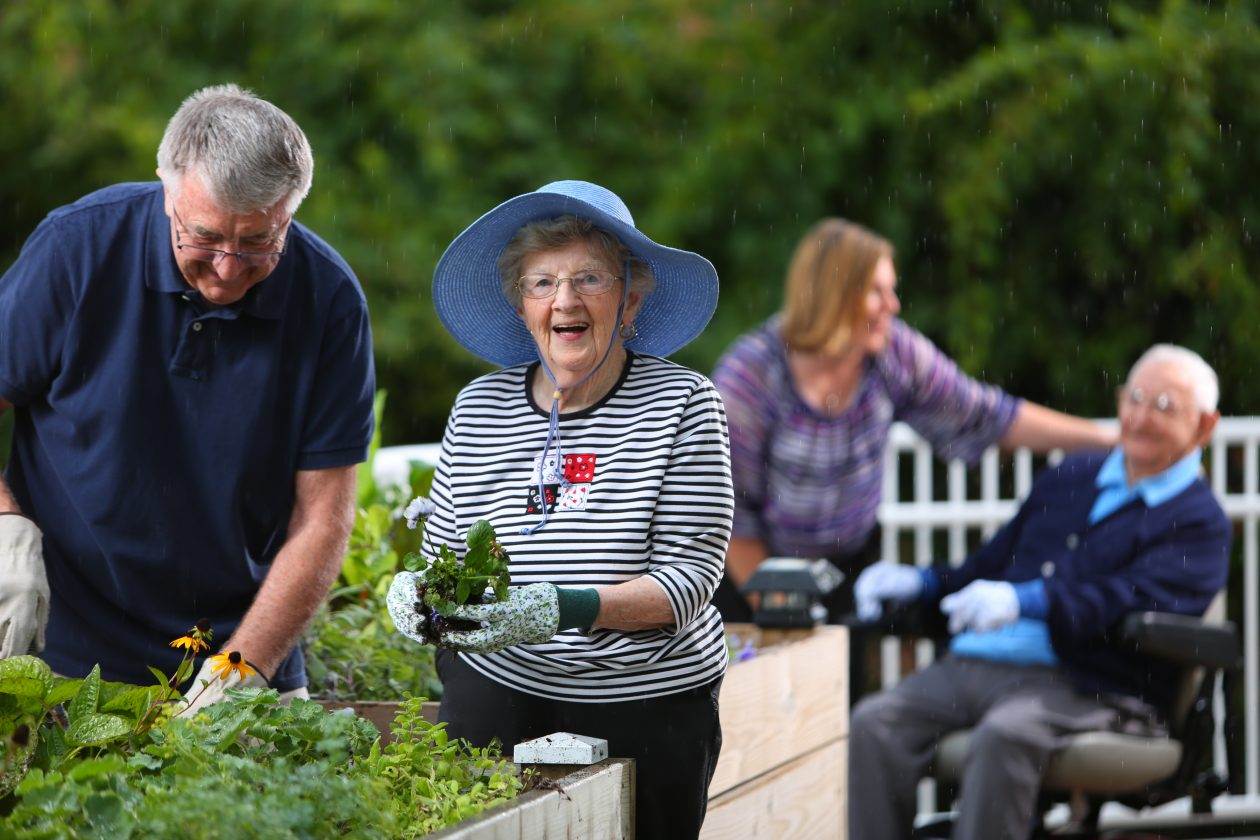March 27th is American Diabetes Association Alert Day, a time to shed some light on the prevalence of Type 2 diabetes and encourage everyone to take the Type 2 Diabetes Risk Test, a free, anonymous test to assess personal risk factors for the disease. Every year, more than one million people are diagnosed with diabetes. According to the American Diabetes Association, the disease is the 7th leading cause of death in America. Almost 85 million Americans aged 18 and older have prediabetes, and over 25% of seniors have the disease. The risk of type 2 diabetes increases with age
At Senior Lifestyle our goal is to help those we serve live healthy, full lives; with that in mind we’re sharing some basic tips from the American Diabetes Association’s Living Healthy With Diabetes guide to help control the disease and avoid complications. You can also download the entire Living Healthy With Diabetes guide for your use at home.
Weight Control
For diabetics, maintaining a healthy weight can help manage the disease. For those who are overweight, losing even 10 to 15 pounds can make a difference. The American Diabetes Association recommends the Plate Method as an aid to creating a healthy diet.
The Plate Method:
- Imagine drawing a line down the middle of your dinner plate. Then on one side, cut it again so you will have 3 sections on your plate like the picture on your right.
- Fill the largest section with non-starchy vegetables like salad, green beans, broccoli, cauliflower, cabbage, carrots, and tomatoes.
- Now in one of the smaller sections, put starchy foods such as noodles, rice, corn, or potatoes.
- The other small section is for meat, fish, chicken, eggs, or tofu.
- Add an 8 oz glass of milk and one small piece of fruit or 1/2 cup of fruit salad and you’ve got a great meal. (If you don’t drink milk, you can add an extra piece of fruit, light yogurt, or a small roll.)
Physical Activity
Being active is another great way to help control the symptoms of diabetes and avoid complications. Be sure to speak to your doctor about what types of activity he recommends. Everyday activities like gardening, walking, raking leaves and carrying groceries can count toward your physical activity. Any physical activity can help lower your blood glucose; however, there are other benefits to maintaining a healthy habit of being physically active.
Other benefits of physical activity include:
- Improving your A1C, blood pressure, and cholesterol
- Having more energy
- Relieving stress
- Burning calories to help you lose or maintain your weight
- Keeping your joints flexible
- Increasing your strength
- Improving your balance to prevent falls
- Lowering your risk for heart disease and stroke
Medication Management
If you have other conditions in addition to diabetes, you may be taking several different medications to manage those conditions as well as your diabetes. It is important to take each medication as prescribed and discuss any changes with your doctor. In order to stay on top of your medication schedule, the Living Healthy With Diabetes guide suggests the following:
- Keep an updated list of your medicines (prescription, nonprescription, dietary supplements including vitamins, and herbal remedies). Record important information about each medicine.
- Take all of your medicines exactly as your doctor tells you.
- Use one pharmacy to fill all your prescriptions if possible.
- Keep medicines in a cool, dry place.
- Use a pill organizer.
- Use a reminder timer, an alarm clock, or your mobile phone alarm to remind you when to take medicine.
- Link pill-taking to something in your daily routine (for example, take your medicine right after you brush your teeth).
- Use a chart or dry erase board to keep track of your pill-taking.
At Senior Lifestyle, we encourage you to observe American Diabetes Association Alert Day, take the Type 2 Diabetes Risk Test, and if you do find yourself at an elevated risk for the disease, speak with your physician about what you can do to lessen your risk of diabetes. Many of the tips we’ve noted above are helpful in avoiding diabetes as well as living with it. To learn more about what we do to stay healthy and active at a Senior Lifestyle community near you, please visit our website at www.seniorlifestyle.com.

